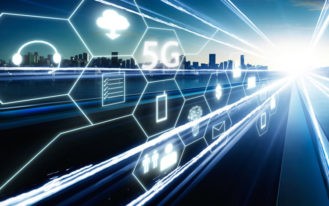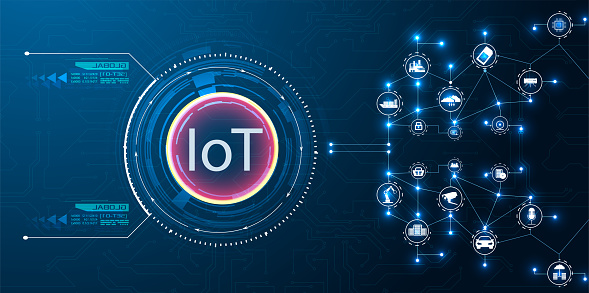5G has been the number one topic of all technology discussions around the globe in the last several years. However, it seems that finally, 5G is on our doorstep. 5G has raised the expectations with multi-gigabit promising speeds and millions of connected devices that will lead to various innovative applications.
Some people are even speculating that when massive 5G deployment takes place, 5G technology will be able to deliver nearly “everything and everywhere.” However, since 5G hasn’t really picked up yet, it may take several years to develop and live up to the initial expectations.
5G Use cases
5G technology offers a wide variety of applications that will transform the up to now way of communicating. Various technical papers describe numerous 5G use cases in detail. However, most of these use cases, whether it is high-speed data rates for video streaming, ultra-low latency or ultra-reliable services for the health and safety sector, focus around three specific key areas.
Enhanced Mobile Broadband (eMBB): Enhanced Mobile Broadband applications require super high speeds to support services such as VR and AR, UHD video and video streaming on demand.
Massive Machine Type Communications (mMTC): Massive Machine Type Applications require a low-power, high-connectivity network based on the 5G Internet of Things and Smart City concept.
Ultra-reliable, Low-latency Communications (URLLC): Ultra-reliable, Low-latency Communications will offer applications that require very low latency and high-reliability to support critical services such as e-Health, remote Surgery, Tactile Internet and Autonomous Driving.
But which will be the first use cases that 5G will offer to the public and why?
5G Early deployment challenges
5G development is expected to commence within 2019, but the Service Providers will not be able to jump-start their network upgrades to support all new 5G services from day one. Services that require up to 10Gbps connectivity per user and end-to-end ultra-low latency cannot be delivered overnight. It is therefore fair to say that 5G network deployment is expected to reach its full potential during the next following years gradually.
Service Providers are in the process of analyzing which use cases apply to each specific market and define the ones that have higher revenue potential. Some of the new 5G services target specific market segments, while others are part of a mass-market 5G service.
It is also apparent that the initial 5G use cases will start to be gradually supported as conditions allow, according to market needs and with the least possible investment on existing infrastructure.
Of course, early 5G deployment also depends on other aspects, such as the availability and market penetration of 5G smartphone devices and the regulation of 5G NR and 5G backhaul spectrum frequencies that will allow the massive 5G development.
Stand-alone and non-Standalone 5G
Telecom Operators following 3GPP Release 15 are targeting to kick-start their 5G network deployments on Non-Standalone mode. 5G Non-Standalone mode means that early 5G implementations will be used on existing 4G LTE infrastructure.
In other words, the initial 5G rollout will be complementary to the existing 4G LTE services where 5G frequencies could deliver the required new high data throughput services. 4G could still be used in parallel to provide LTE services with existing cell towers and the existing core network.
As a result, most of the early 5G rollout seems to evolve around the enhanced mobile broadband (eMBB) use case area, providing high data rate 5G broadband services. These services will be mainly based on the 5G Fixed Wireless Access (FWA) connectivity using the 3GPP 5G NR at 3.5 and 26/28 GHz millimeter-wave spectrum and the unlicensed 60 GHz frequency band.
The 5G standalone network is the next step of providing an independent 5G end-to-end infrastructure to deliver a more efficient enhanced 5G platform. This new 5G network structure will give the Operators the boost to deliver high-efficient, ultra-reliable low latency communications (URLLC).
5G FWA for home broadband
5G Fixed Wireless Access (FWA) is a technology that takes advantage of the latest wireless communication systems to deliver fiber-like gigabit connectivity to last-mile and last-meter endpoints, as explained thoroughly in the “5G Fixed Wireless Access (FWA) and Virtual Fiber” post.
5G FWA can be considered as an extension of the initial Wireless-to-the-Cabinet (WTTC) and Wireless-to-the-Building/Home (WTTB/H) applications to provide higher throughputs for households in case of fiber unavailability.
5G Smart Agriculture
Agriculture is one of the first industries to take advantage of the early NB-IoT applications. Multiple sensors will be used to detect the water levels in the soil. Sensors will also be able to record humidity and monitor ground and air temperature.
The use of drones will enable the possibility of aerial pesticide spraying, having remote control via video and provide advanced safety and security features.
Another area of interest is Smart farming, where smart livestock tracking becomes possible. Furthermore, similar applications may be used to monitor milk and meat production. Video control of olive trees and grapevine monitoring for optimization of wine productivity will also become possible.
5G AR/VR
Augmented Reality (AR) and Virtual Reality (VR) are areas that will provide new exciting 5G functionalities, with initial developments in the tourism, travel and sports areas. From electronic guides to e-translations up to AR holographic 3D statue models on museums and even remote museum sightseeing, virtual tourism will be the hype of the tourist industry for the years to come.
Sports fans will take advantage of advanced onsite services, such as smartphone replay on demand, drone video, zooming on specific areas and 360° on-field player view.
Further AR/VR opportunities for future development can be seen in VR shopping, AR/VR gaming, Virtual doctor and even remote surgery applications.
5G Digital Transportation
5G is expected to bring a significant evolution on transportation from the current car entertainment functionalities via wi-fi or 4G spot to full automation of self-driving cars and Tele-operated Driving (ToD) based on human experience.
Full autonomous driving is a big step to achieve, but early deployments are seen in the tourism area such as tourist & shuttle buses, airport & port automatic transportation. With these applications, a limited number of people will be carried with low speeds under a controlled environment of specific and designated road areas, thus, reducing the possibility of vehicle interaction and car accidents.
5G Drones for Digital Sky
The 5G digital sky is an initiative to provide connectivity to aerial vehicles, regulate vehicle behavior and support innovative solutions.
With the aid of drones, several governmental agencies such as the Fire Brigade, Police and Border Control will be able to support advanced surveillance and forest fire protection services.
In addition, specific business areas may be benefited by the use of fast transportation, industrial inspection and remote supervision of the environmental pollution on areas such as seawater, industrial sites, and ancient monuments.
5G Smart City
5G Smart City is mainly based on the FWA eMMB model to provide the Internet of Things concept. As an extension to the actual smart home, a smart city will have many devices connected to our 5G smartphones to interact and communicate with each other.
From street or traffic lights, smart parking and auto driving to remote training, fleet management and home automation, smart city scenarios are about to pick up within 2020 and gradually evolve up to the point where a 5G end-to-end stand-alone network will be available.
5G Deployment conclusion
There is no doubt that 5G will be a giant leap for the telecom industry. Of course, consumers and tech lovers should not expect that by next year we will be able to enter a car in any part of the world, say the destination, sit back, read a book and enjoy the ride.
5G will undisputedly revolutionize our world. However, our societies will need a few more years to reap the full benefits of 5G technology.













